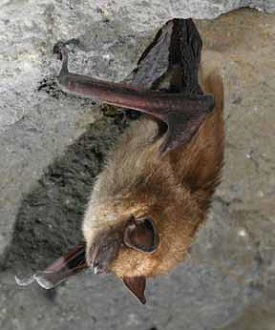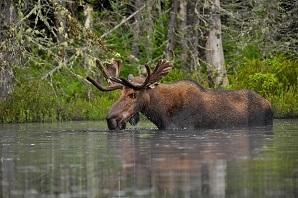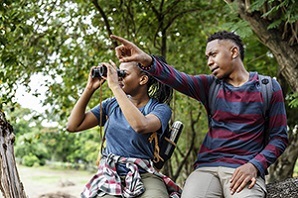Wildlife, Fish, and Marine Life Newsletter
The New York State Department of Environmental Conservation sent this bulletin on 10/13/2021 03:16 PM EDT |
| DEC Delivers - Information to keep you connected and informed from the NYS Department of Environmental Conservation |
| Share or view as a web page || Update preferences or unsubscribe |
Wildlife, Fish & Marine Life Newsletter |
Help Protect New York's Bat Populations During Bat Week
Unfortunately, many species of bats, including little brown bats, have faced severe population declines due to white-nose syndrome. The disease has killed more than 90 percent of bats at hibernation sites in New York. You can help protect New York's bat populations by avoiding caves and mines, which may be home to hibernating bats, from October through April. Human disturbances are very harmful to bats. White-nose syndrome makes bats very sensitive to disturbances. Even a single, seemingly quiet visit can kill bats that would otherwise survive the winter. If you see hibernating bats, assume you are doing harm and leave immediately. Anyone entering a northern long-eared bat hibernation site from October 1 through April 30, the typical period of hibernation for bats, may be subject to prosecution. Some bat facts:
Learn more about bats in Bats of New York State (PDF). Photo by Al Hicks. Drivers Urged to Be Alert for Moose in the Adirondacks
Moose are most active at dawn and dusk, which are times of poor visibility. Moose are especially difficult to see at night because of their dark brown to black coloring and their height—which puts their head and much of their body above vehicle headlights. Take the following precautions to prevent moose-vehicle collisions:
Photo by Steve Spudie. DEC to Discuss Managing Wildlife on Perch River Wildlife Management Area
The event will feature a 60-minute presentation that discusses the WMA’s history, habitat goals, and planned management actions, followed by a question and answer period. This presentation will also be recorded and made available to the public afterward. The NYS Birding Trail Takes Flight
The New York State Birding Trail provides information on places anyone can go to find birds amid beautiful natural settings across the state. The trail is not a physically connected or built trail but a network of promoted birding locations that can be accessed by car or public transportation and provides an inclusive experience for all. New York City is the first region to be announced, with future announcements expected over the next year. Learn about other places to watch wildlife near you and some of DEC’s watchable wildlife tips. Thank you to our partners NYC Parks, NYS Parks, and National Park Service (Gateway Recreation Area). |


 Early fall is the breeding season for
Early fall is the breeding season for  DEC will host a virtual public presentation to share details about a recently completed habitat management plan for Perch River Wildlife Management Area (WMA).
DEC will host a virtual public presentation to share details about a recently completed habitat management plan for Perch River Wildlife Management Area (WMA). DEC Commissioner Basil Seggos announced
DEC Commissioner Basil Seggos announced